Our recent week in New York City was an action packed one. We decided to set ourselves a challenge to see and do as much as we possibly could, and that gave way to this video guide, photo essay and travel guide which highlights 10 of the top attractions.
In a city like New York this means we barely scratched the surface, but hopefully this video will highlight the cornucopia of possibilities that is the Big Apple.
1) Grand Central Terminal
Most journeys to New York City begin at Penn Station or Grand Central Terminal, and if you arrive at the later you’ll be wowed by the building. This commuter railroad terminal located at 42nd street and Park Avenue serves commuters traveling into the city from various locations in New York State receiving over 21 million visitors annually.
Many affectionately and colloquially refer to it as Grand Central Station and if you’re a fan of Hollywood movies you’ll recognize the terminal from numerous films. For a great photo or video walk up the steps to a higher vantage point and marvel at the volume of people scurrying around.
Designed by Reed and Stem and Warren and Wetmore, the terminal opened in 1913 and remains one of the finest examples of Beaux-Arts architecture. Over the years, it has witnessed countless stories. From its role in the development of NYC’s transportation network to its near-demolition and subsequent preservation efforts.
One of the most epic and somewhat hidden features of Grand Central is the Whispering Gallery. Located by the Oyster Bar, this acoustic marvel allows you to whisper into one corner and have your voice heard clearly on the opposite side.
Tips for Visitors
- Take a Guided Tour: To gain deeper insights into Grand Central’s history and architecture, consider joining a guided tour. Tours are available through the Municipal Art Society or audio tours via the official Grand Central app.
- Explore the Details: Don’t rush. Take time to notice the smaller details, like the hidden acorn motifs or the Tiffany glass clock.
- Enjoy the Food: Treat yourself to a meal or a snack. The Grand Central Oyster Bar is a classic choice, but there are plenty of other options to suit all tastes and budgets.
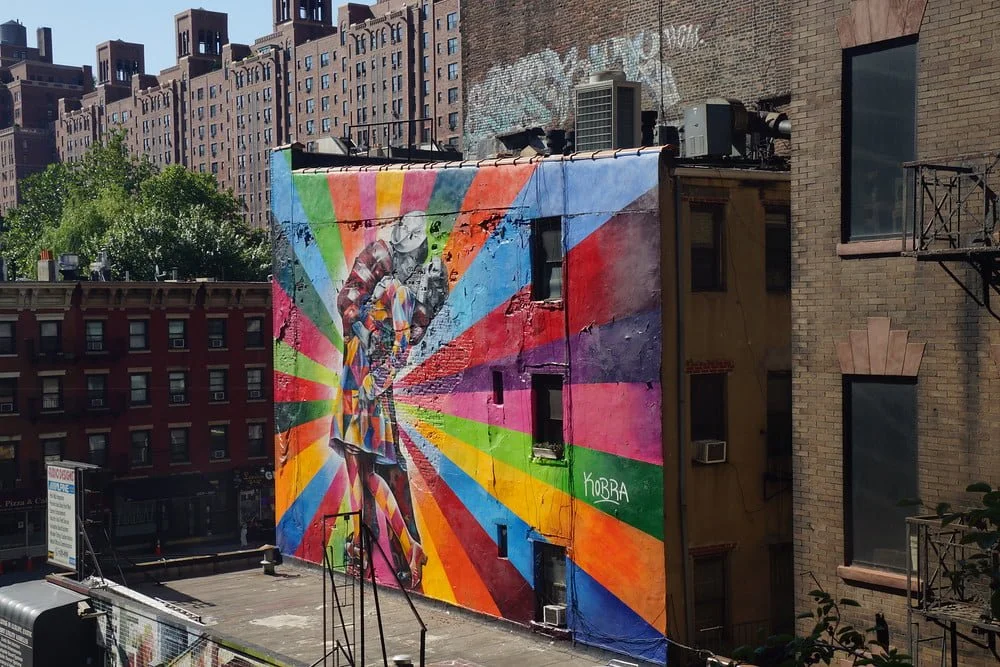
2) The High Line
A relatively new attraction in New York City is the The High Line, which is an old section of rail tracks that used to run from Chelsea all the way to the Meatpacking district. This linear public space has been reclaimed and and re-purposed into a walking park. Stretching out over 1.6 kilometers, the former west side line tracks run from Gansevoort Street through the Meatpacking District and Chelsea.
We enjoyed the elevated views of the various neighborhoods we passed along with all of the opportunities to snap photos and occasionally sit down on a park bench just to rest.
Throughout the park, you’ll encounter fascinating art installations, sculptures, and murals that add a creative flair to your walk. Additionally, the park provides unique vantage points for admiring the architecture of the surrounding buildings. You’ll enjoy panoramic vistas of the Hudson River, the city skyline, and iconic landmarks like the Empire State Building.
One of the best things about The High Line is that it’s free and accessible to everyone. There are multiple entry points along the route, many of which are equipped with elevators, making it easy for visitors with strollers or mobility challenges to enjoy the park.
Tips for Visitors
- Plan Your Route: With multiple entry and exit points, plan your route in advance to ensure you see all the highlights and conveniently access nearby attractions.
- Respect the Space: The High Line is a public park, so be mindful of other visitors. Stick to the paths, don’t pick the flowers, and keep noise levels low to maintain the peaceful atmosphere.
- Check for Events: Visit The High Line’s website to check for special events or guided tours that might enhance your visit.
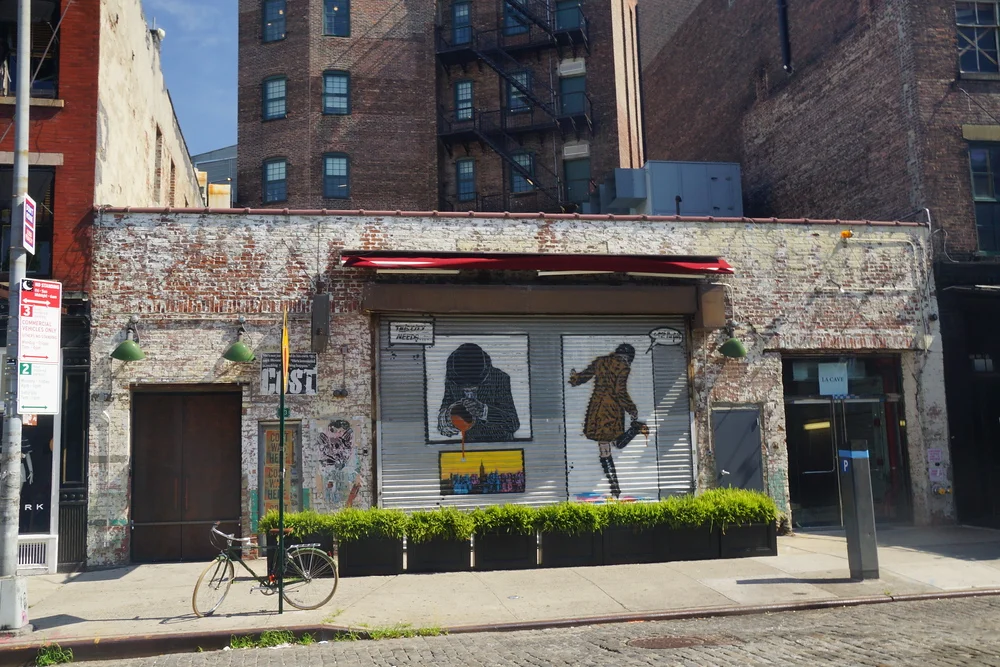
3) Meatpacking District
The Meatpacking District was once home to markets, slaughterhouses, and packaging plants, but times have changed. Today you’ll find a mixture of trendy restaurants, clubs and boutiques. This Manhattan borough runs from West 14th Street south to Gansevoort Street and is now the home of many young professionals and hipsters. We particularly enjoyed just wandering around without any specific purpose or aim.
The preserved cobblestone streets and historic buildings offer a glimpse into its gritty past, while the boutiques and posh eateries showcase its contemporary appeal. This unique blend creates an atmosphere that’s both nostalgic and cutting-edge.
Two of NYC’s iconic attractions are located in the Meatpacking District: The High Line and the Whitney Museum of American Art. The High Line, an elevated park built on a historic freight rail line, offers stunning views of the city and the Hudson River. The Whitney Museum, dedicated to contemporary American art, features works by some of the most influential artists of the 20th and 21st centuries.
The Meatpacking District is easily accessible by subway, with the A, C, E, and L lines stopping at 14th Street/Eighth Avenue. It’s a pleasant stroll from nearby neighborhoods like Chelsea and Greenwich Village.
Tips for Visitors
- Explore Beyond the Main Streets: Venture off the main roads to discover hidden gems, including quaint cafes, boutique shops, and art galleries.
- Visit Early or Late: To avoid the crowds, visit popular spots like the High Line and the Whitney Museum early in the morning or later in the evening.
- Check Event Listings: The Meatpacking District frequently hosts events, including art openings, food festivals, and street fairs. Check local listings to see what’s happening during your visit.
4) Greenwich Village
The Village used to be a bohemian neighborhood that drew artists and musicians, but today you’re more likely to find upper middle class families living here. The streets are shaded and quiet, and it’s a nice place for a casual stroll. Referred to by locals as simply “the Village”, the exorbitantly high housing costs have caused artists to flee to SoHo, TriBeCa and more recently Williamsburg and Bushwick. Home to many celebrities, you might spot Uma Thurman, Edward Norton or Matthew Broderick who live in the village.
Often simply known as “The Village,” a neighborhood that embodies the spirit of bohemian New York. It’s the birthplace of the Beat Generation, the epicenter of the 1960s counterculture movement, and a nurturing ground for artists, musicians, and writers.
From iconic pizzerias like Joe’s Pizza to gourmet eateries and hidden speakeasies, the culinary scene here is diverse and exciting. Whether you’re craving a classic New York bagel, international cuisine, or an artisanal cocktail, Greenwich Village has plenty to offer.
Greenwich Village is also synonymous with music. It’s home to legendary venues like The Bitter End and Café Wha?, where icons like Bob Dylan, Jimi Hendrix, and Bruce Springsteen once performed. Even today, live music fills the air, with countless bars and clubs offering performances every night.
Tips for Visitors
Take Your Time: The Village is best enjoyed at a leisurely pace. Take your time to wander, explore, and soak in the atmosphere.
Explore Off the Beaten Path: Venture beyond the main streets to discover hidden gems. The side streets often hide the most interesting finds.
Join a Walking Tour: To learn more about the area’s rich history and culture, consider joining a walking tour. Knowledgeable guides can offer fascinating insights and stories.
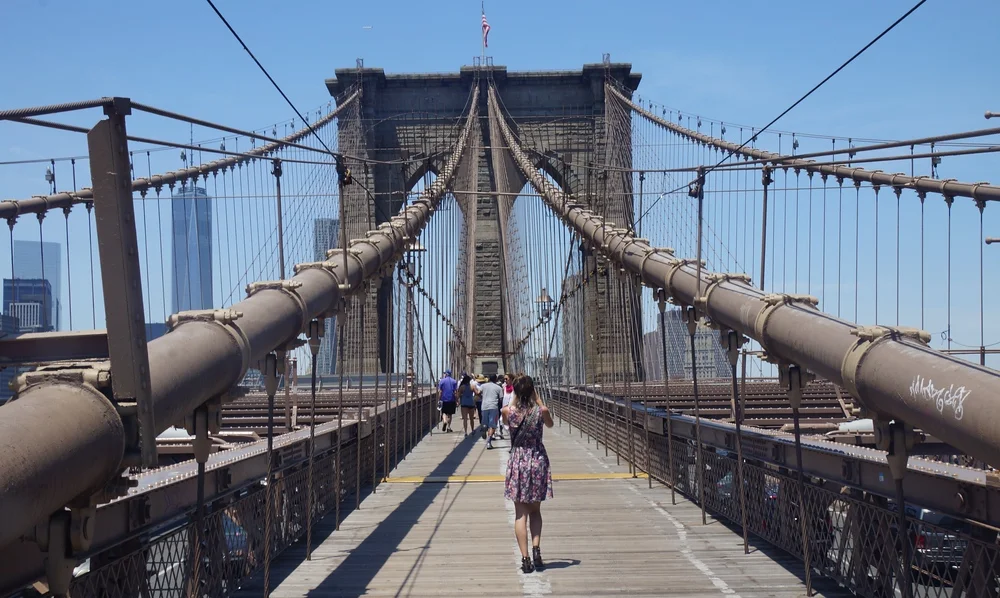
5) Brooklyn Bridge
One of the things I had always dreamed about doing in New York City was to walk across the Brooklyn Bridge. Completed in 1883, Brooklyn Bridge is one of the oldest suspension bridges in the United States connecting the boroughs of Manhattan and Brooklyn. Spanning 486 meters it as the first steel-wire suspension bridge ever constructed. You’ll want to set aside a decent chunk of time to walk across the bridge slowly as the views of New York City (and especially Manhattan Island) are phenomenal.
Designed by John A. Roebling and completed by his son Washington Roebling, the bridge was the longest suspension bridge in the world at the time of its opening. The Gothic-style stone towers and intricate cable designs make it a symbol of New York City’s resilience and ambition.
From the bridge, you can see the Statue of Liberty, the Empire State Building, and the entire Manhattan skyline. The East River flows below, with boats and ferries adding to the dynamic scene. Whether you visit during the day, at sunset, or at night when the city lights up, the views from the Brooklyn Bridge are simply unparalleled.
The Brooklyn Bridge’s epic nature lies in its function and form. It connects two of New York City’s most dynamic boroughs: Manhattan and Brooklyn. This pedestrian-friendly bridge spans 1.1 miles and allows you to easily traverse between the bustling city center and the more relaxed, artsy vibe of Brooklyn.
Tips for Visitors
- Plan Your Route: Decide whether you’ll start from Manhattan or Brooklyn and plan your transportation accordingly.
- Be Mindful of Cyclists: The pedestrian path is shared with cyclists, so stay to the right and be aware of your surroundings.
- Take Your Time: There’s no rush. Take your time to enjoy the views, read the informational plaques, and absorb the experience.
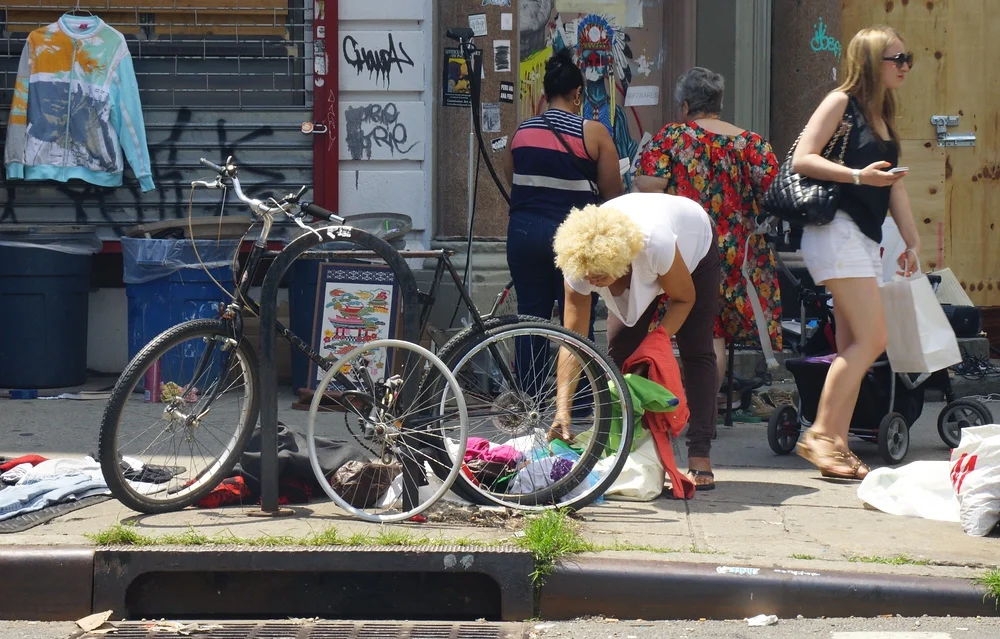
6) Williamsburg
Williamsburg is one of the more popular neighborhoods in Brooklyn. It definitely has a very young feel as we spotted lots of twenty something year old’s roaming the streets enjoying spot flea markets, independent restaurants and art galleries. Considered to be the new ‘it’ spot Williamsburg has become quite popular given its lower rent prices. University students and young professionals have been flocking to this part of town for years.
The neighborhood is renowned for its diverse community, which brings together artists, musicians, young professionals, and longtime residents. This mix creates a vibrant atmosphere that is both welcoming and dynamic. Walking through Williamsburg, you’ll encounter an array of cultures and styles from street art to indie boutiques.
Tips for Visitors
- Explore Beyond Bedford Avenue: While Bedford Avenue is the main thoroughfare, the side streets and less-known areas often hide the most interesting finds.
- Join a Walking Tour: Consider joining a walking tour to learn more about Williamsburg’s history, art, and culture. Local guides can provide fascinating insights and stories.
- Check Local Listings: Williamsburg is known for its events and festivals. Check local listings or community boards to see what’s happening during your visit.
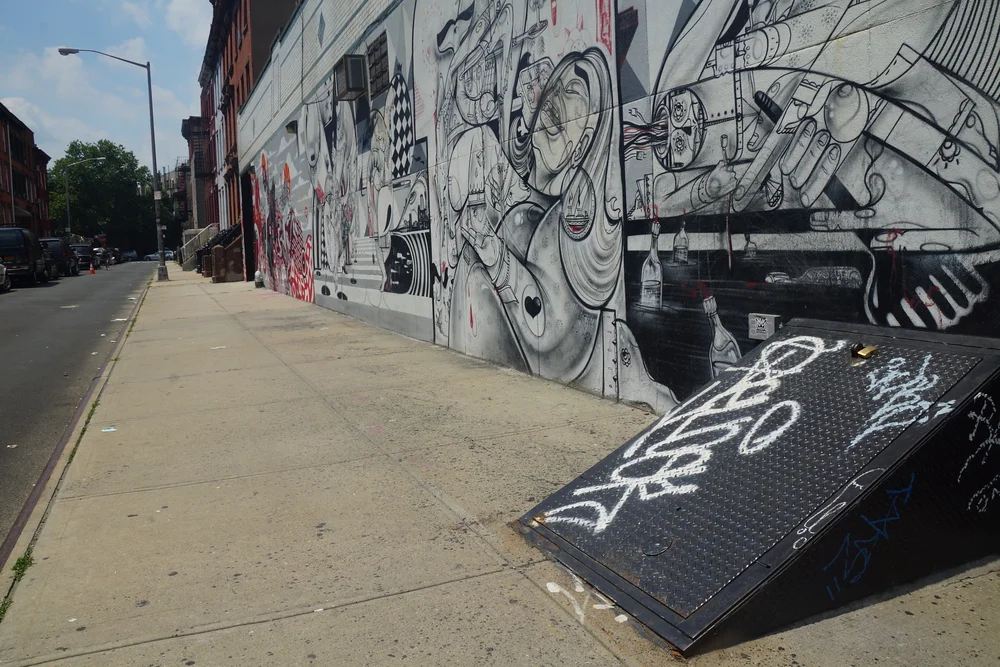
7) Street Art In Williamsburg
For those who love to marvel at urban street art and graffiti be sure to check out the impressive tasteful murals along Bedford, Fillmore, and Roebling of Williamsburg. It is the perfect way to spend a morning after feasting on a local brunch. This area reminded me a lot of the Le Plateau neighborhood in Montreal and if we had another week to spend in the city, I would have definitely chosen to stay here.
One of the most enduring aspects of Williamsburg’s street art scene is its constant evolution. The walls are ever-changing, with new pieces appearing regularly. This dynamic nature means that no two visits are the same. The anticipation of what you’ll find next adds an element of excitement to your exploration. Popular spots like the Bushwick Collective and the walls along Bedford Avenue are particularly photogenic.
Williamsburg is easily accessible by subway. Take the L train to Bedford Avenue, the neighborhood’s main artery. Alternatively, the G train stops at Metropolitan Avenue and Nassau Avenue.
Tips for Visitors
- Join a Walking Tour: To get deeper insights into the street art and its creators, consider joining a walking tour. Local guides can share fascinating stories and help you discover hidden gems.
- Respect the Art: Remember that street art is a form of expression and a gift to the community. Avoid touching the artwork and respect the spaces it occupies.
- Engage with the Community: Don’t hesitate to strike up a conversation with locals or artists. They often have great stories and recommendations.
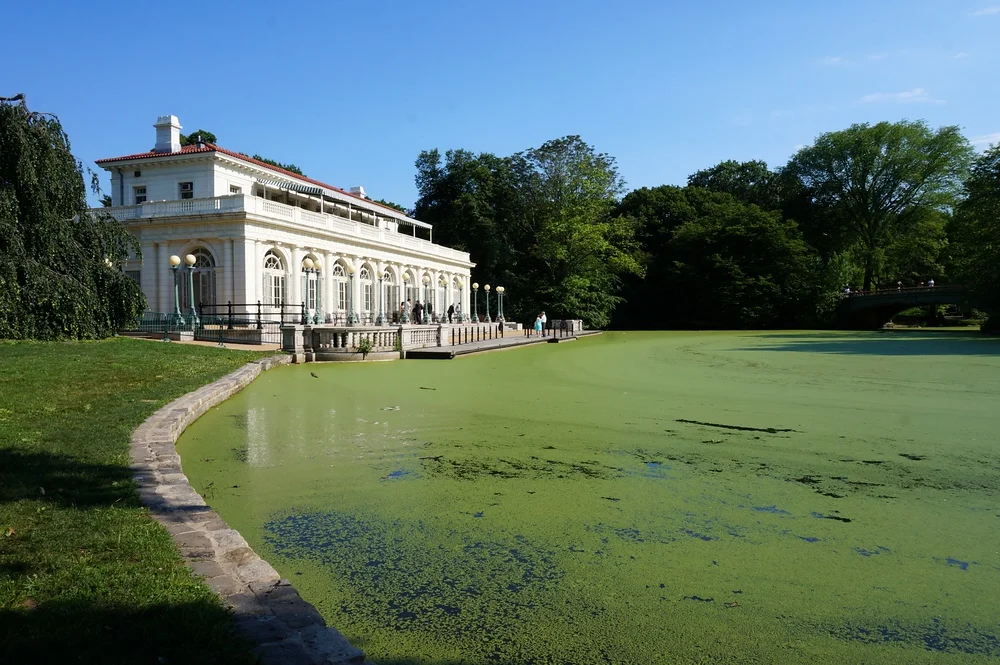
8) Prospect Park
This is a massive park located in Brooklyn and it was designed by the same landscape architects who brought Central Park to life. Under-rated compared to Central Park (I actually met New York residents who have never visited), it is a much quieter park to enjoy relaxing, exercise, tanning or a picnic. Spread out over 583 acres, some of the highlights include the Long Meadow, the Picnic House, Litchfield Villa and the Boathouse.
Completed in 1867, Prospect Park has been a vital part of Brooklyn’s community for over 150 years. Historic landmarks like the Soldiers’ and Sailors’ Arch at Grand Army Plaza and the Lefferts Historic House are distinct landmarks.
One of my favourite features of Prospect Park is the sheer variety of activities it offers. You can rent a paddleboat on the lake, go horseback riding at the Kensington Stables, or explore the Ravine, Brooklyn’s only forest. The park also features playgrounds, sports fields, and the Prospect Park Zoo.
Throughout the year, the park also hosts food festivals, farmers’ markets, and community events. The park is conveniently located and easily reachable by subway. The 2 and 3 trains stop at Grand Army Plaza, while the B, Q, and S trains stop at Prospect Park station.
Tips for Visitors
- Explore Different Areas: Prospect Park is vast and diverse. Make sure to explore different sections, including the Long Meadow, the Ravine, and the Boathouse.
- Join a Tour: Guided tours are available for those interested in learning more about the park’s history and natural features. Check the Prospect Park Alliance website for schedules and details.
- Respect the Environment: Keep the park clean by using trash bins and recycling stations. Respect wildlife and plants, and stick to designated paths to preserve the natural beauty of the park.
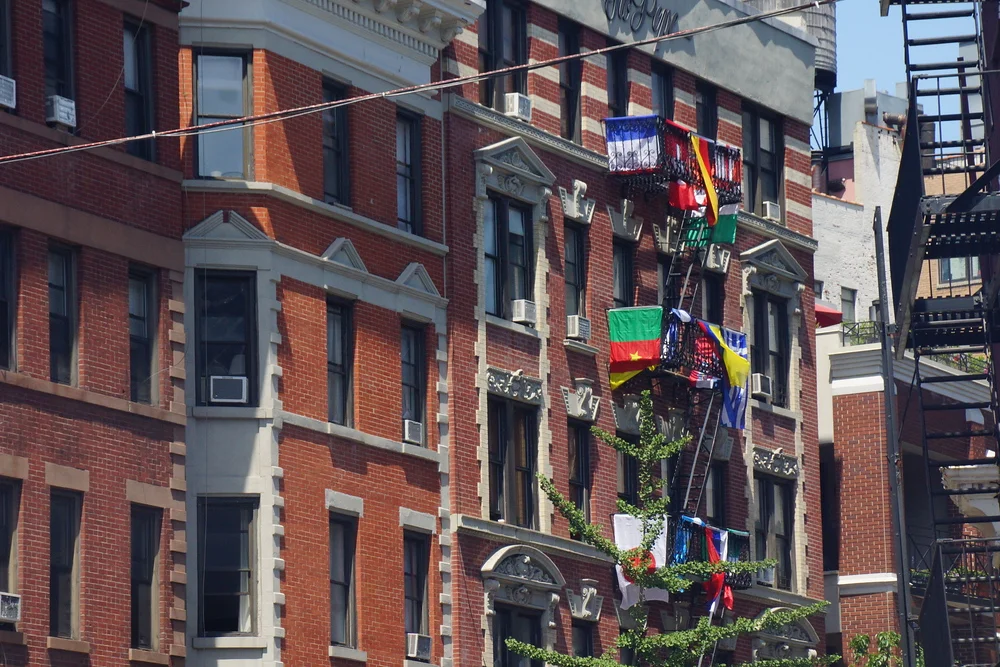
9) Dumbo
The historic district of DUMBO, which stands for down under the Manhattan bridge overpass, is a fantastic place to go walking along the riverfront for up close and personal views of the Brooklyn and Manhattan Bridges and the Manhattan skyline. As one of the top art districts in all of New York City, you’ll find a section of art galleries as you wander around.
Dumbo is home to some of NYC’s most iconic photo spots. The view of the Manhattan Bridge framed by red brick buildings on Washington Street is a must-see (and must-snap). This view, often featured in movies and TV shows captures the essence of Dumbo.
The cobblestone streets and 19th-century warehouses evoke a sense of history. While the contemporary art installations, trendy cafes, and boutique shops add a modern twist.
Dumbo is easily accessible by subway, with the F train stopping at York Street and the A and C trains stopping at High Street-Brooklyn Bridge. Ferries also provide a scenic route to Dumbo, with NYC Ferry’s East River route stopping at the Fulton Ferry landing.
Tips for Visitors
- Explore Beyond the Main Streets: Dumbo’s charm extends beyond its main thoroughfares. Wander the side streets and alleys to discover hidden gems, from cozy cafes to unique shops.
- Join a Walking Tour: To gain deeper insights into Dumbo’s history and culture, consider joining a walking tour. Knowledgeable guides can provide fascinating stories and background information.
- Check Event Listings: Dumbo frequently hosts events, from outdoor movies and concerts to art festivals and food markets. Check local listings to see what’s happening during your visit.
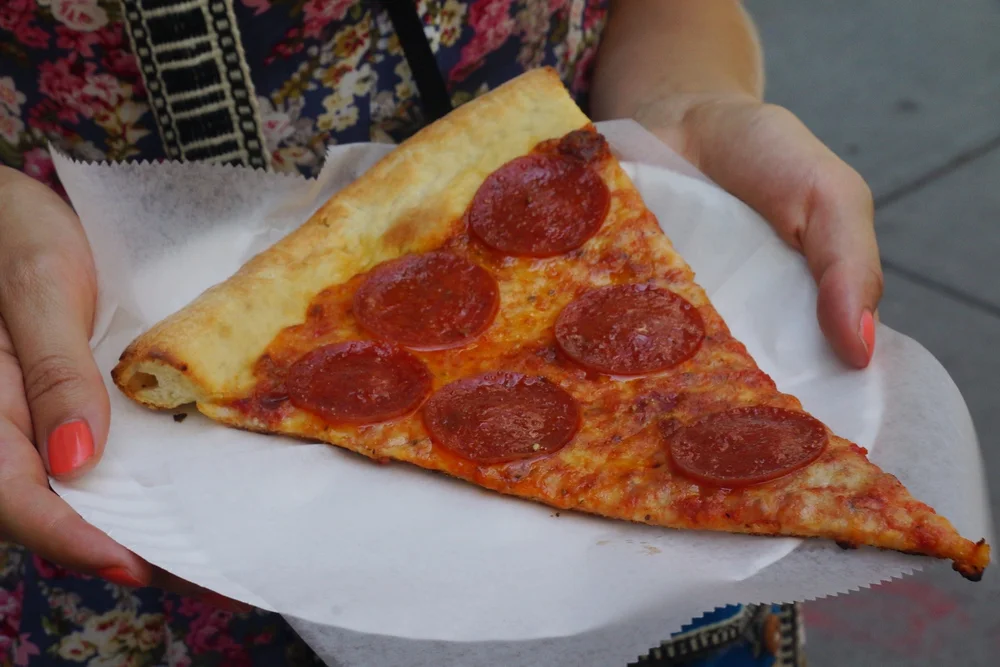
10) New York Style Pizza
You can’t come to New York and not have a slice of authentic New York style pizza. I can’t think of a better place to have it than in Brooklyn where you can order it by the slice along with a can of soda. What is unique about New York style pizza? It is known for its large, thin and wide bendable yet crispy shape. It is typically hand tossed and is light on sauce compared to Chicago deep dish pizza. Be sure to add plenty of oregano, garlic and Parmesan cheese to spice it up!
The secret to New York style pizza lies in its crust. Thin yet sturdy, the crust is the foundation of the perfect slice. It’s crispy on the outside, chewy on the inside, and just the right thickness to support the toppings without becoming soggy. From pepperoni and sausage to more adventurous options like buffalo chicken or white clam, there’s a slice with your name on it.
Places like Lombardi’s, the first pizzeria in the United States, and Di Fara, known for its meticulously crafted pies. Visiting these iconic spots allows you to taste the legacy and passion that has made New York pizza famous.
One of the best things about New York style pizza is its affordability. Start with some of the city’s most renowned pizzerias:
- Lombardi’s: Located in Little Italy, this historic spot is known for its coal-fired pies.
- Di Fara Pizza: In Midwood, Brooklyn, this pizzeria is legendary for its perfect crust and fresh toppings.
- Joe’s Pizza: With locations in Greenwich Village and beyond, Joe’s is famous for its classic New York slice.
- Prince Street Pizza: Known for its thick, square slices and spicy pepperoni, this Nolita spot is a must-visit.
Tips for Visitors
- Fold and Eat: The proper way to eat a New York slice is to fold it in half lengthwise and enjoy.
- Try Different Styles: Don’t limit yourself to just one pizzeria. Each has its unique style and flavor profile.
- Ask Locals: For insider tips and hidden gems, ask locals where they go for the best slice.
